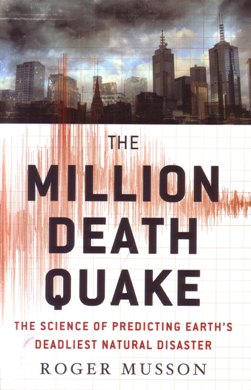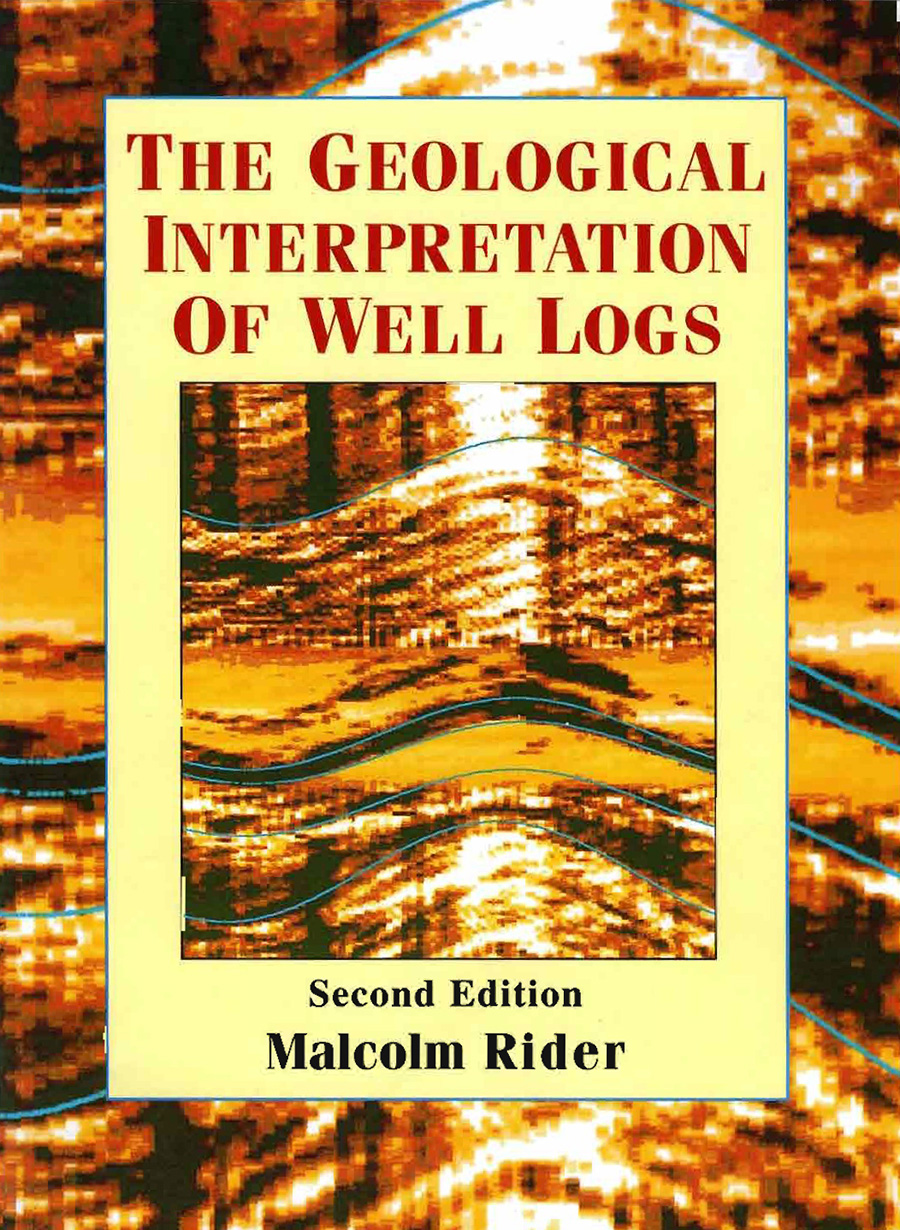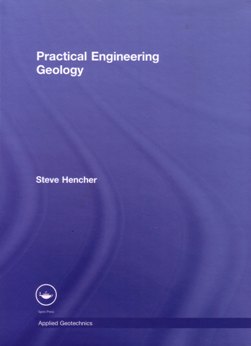 The Million Death Quake
The Million Death Quake
This is a wonderful book, easy to read and very informative about what earthquakes are, how they occur, the consequences of building in earthquake zones, and how we can protect ourselves from the worst impacts. It is an avowedly popular introduction, and a great read for geologists or engineers who are not themselves specialists. It is also extremely readable, by anyone, regardless of science background.
Musson’s opening line is a real grabber: “Imagine a city screaming”. He then presents a dramatisation of the Haiti earthquake (12 January 2010). These first pages capture you immediately. I could not stop reading until I had finished the first chapter.
So what is so interesting? It is the combination of scientific explanation and historical information, much of it gleaned from ancient scripts and subject to all the mistranslation and misinterpretation of the past. The author sets out how our understanding has evolved from ancient times; from a time when we could only conceive of earthquakes as a sign of God’s anger, through to the last century, and the acceptance of continental drift as the fundamental driver shaping our globe.
Musson’s explanation of seismic waves using a ‘Slinky’ toy is effortlessly handled. From this, he goes on to describe seismometers, and explains how atomic bomb-testing gave us a global network that hugely benefited humanity by increasing the information available on earthquakes too. I was fascinated to read there is a complete seismic record of the London Blitz because one seismometer was recording throughout!
Tsunamis feature as the consequences of certain types of earthquake. Some of Musson’s descriptions are bizarrely comic (houses floating down an inlet in Maine as a fisherman returns home) but the visions we all saw on TV of the 2004 Sumatra tsunami, and Japan in 2011, were both terrifying and horribly compulsive viewing.
The last chapters set out how we can protect ourselves. Our inability to ‘predict’ earthquakes is fascinatingly set out, with examples from around the world of different methods, and of examples where we apparently managed to predict one earthquake and save many lives, and others where we failed. Musson goes on to discuss earthquake-proofing, and identifies those places currently most likely to suffer the title’s ‘million death quake’. Riveting. A must-read.
By James Montgomery
THE MILLION DEATH QUAKE
ROGER MUSSON Published by Palgrave Macmillan
ISBN 978-0-230-11941-3. 272pp.
List Price: £16.99. http://www.palgrave.com/products/title.aspx?pid=527038
 The Geological Interpretation of Well Logs
The Geological Interpretation of Well Logs
This third edition contains new material to update the reader on some of the advances in this field. Previous editions of this book have been well received by the industry and academia – the improvements in this edition, including an expanded chapter on image logs, a chapter on Logging While Drilling and the inclusion of colour diagrams and headings should make it even more welcome.
The book is very comprehensive in its coverage of the various well logging tools and helpfully explains the theory, principles and how well log data is used and interpreted, in a way that is easy to follow and understand. I can recall struggling to understand very technical well-logging manuals in my own well-site geologist days (1980s). If only this publication had been available to me then!
The book begins with a brief history of well-logging and explains the purpose of the manual. This is followed by an excellent and very relevant explanation of the logging environment and how drilling can affect the formation and its effect on well-log data.
Subsequent chapters deal with individual logging tools, the information they produce and how it can be used to determine lithologies and facies. Each chapter follows a logical sequence and the consistent structure makes reading and following the topic very easy indeed. While each chapter goes into some detail, the emphasis is on what is necessary to explain the principles, uses and application of the tools. To support the explanations there are comprehensive colour diagrams, actual logs and illustrations.
Overall, the structure of the volume lends itself, by design I suspect, to use as a course text, and will be useful to the novice and the experienced alike. Well-logging can be a very esoteric subject but the authors have tried to keep it as simple as possible. To this end the use of acronyms is kept to a minimum and where they are used they are clearly explained.
What really impressed about this book was the inclusion of the chapter on sequence stratigraphy and, in the concluding chapter, how well logs can be used in purely geological context by explaining how they can be used to identify geological events lasting only a few hundred years.
In conclusion, a highly recommended book - whether your interest be academic, professional - or just curiosity.
Reviewed by Andrew Southworth
THE GEOLOGICAL INTERPRETATION OF WELL LOGS
MALCOLM RIDER & MARTIN KENNEDY Published by Rider-French Consulting Ltd., Scotland 2011 ISBN: 978-0-9541906-8-2. 432 pp.
List Price: £60 www.riderfrench.co.uk
 Practical Engineering Geology
Practical Engineering Geology
This book is aimed at engineering geologists and geotechnical engineers entering the profession and summarises the things that the author wished he had known when starting out on his career. Indeed, this begins with considering what an engineering geologist needs to know, and touches on the issues facing the young professional given the structure of higher education. Clearly there is a need for integrating topics across the spectrum of Earth science and engineering, yet undergraduate degrees alone are not structured to achieve this. Meanwhile the intensive postgraduate one-year Master’s course has become virtually extinct with the upsurge of four-year MSci/MEng degrees focused more on developing research skills.
The book is therefore structured to focus attention on what an engineering geologist needs to know, professional qualifications and training, engineering practice, ground models and site investigation, geotechnics (soil and rock mechanics), and unexpected ground conditions (hazard assessment) and how to avoid problems.
The author is Director of Halcrow China, but also holds academic appointments as Professor of Engineering Geology at the University of Leeds, UK and as Honorary Professor at the University of Hong Kong, and is therefore extremely well placed to provide guidance from the interface between professional practice and academe.
Early on he develops his view: that Engineering Geology is the scientific study of the Earth as it relates to engineering practice (principally civil, mining and petroleum). It follows that Soil and Rock Mechanics are tools to be used within Engineering Geology, yet curiously does not similarly encompass Hydrogeology - even though the author clearly believes that ‘water is critically important to many geotechnical projects’. He nevertheless argues that you cannot have soil mechanics without soil and similarly for rock, although the distinction between ‘soil’ and ‘rock’ is artificial for the continuum that makes up geological material; engineering geologists need to recognise this and have a basic understanding of the principles of both.
Chapters are then devoted to ground models and site investigation. Rather than taking a textbook approach, the emphasis is on what the trainee engineering geologist needs to know that they may not have been taught. Herein lies the great value of this book: providing a readable and accessible digest of tips and prompts to raise awareness of the issues that may adversely affect the site under consideration.
Case histories are drawn from the author’s own experience, largely in SE Asia and the UK; but this apparently parochial consideration is an advantage rather than a drawback since the author is speaking from first-hand experience and not recycling the studies of others. The two regions encompass a range of geological conditions found across the world, introducing a variety of geomaterials, histories and environments that help bring the earlier chapters to life. Furthermore, the author is refreshingly frank about mistakes as well as successes while successfully avoiding the appointment of blame.
As an antidote to standard texts, this publication is a valuable contribution to the armoury of all budding engineering geologists.
By Mike Rosenbaum
PRACTICAL ENGINEERING GEOLOGY
STEVE HENCHER Published by: Spon Press, 2012. ISBN: 978 0 415 46909 8 (paperback) ISBN: 978 0 415 46908 1 (hardback) ISBN: 978 0 203 89482 8 (eBook)
List price: £45.00 (paperback) List price: £120.00 (hardback) 450 pp. www.routledge.com/books/details/9780415469098/
 Geology of the Jurassic coast - The Isle of Purbeck, Weymouth to Studland.
Geology of the Jurassic coast - The Isle of Purbeck, Weymouth to Studland.
This book is suitable for anyone interested in the geology of Dorset, from GCSE to professorial level. It has many excellent plates and is very good value for the list price of £9.95
It begins with a brief introduction to World Heritage Sites and the work of UNESCO before moving on to consider the rocks of the Isle of Purbeck. It considers the many rock types in Dorset (largely Jurassic and Cretaceous) and the associated fossils - ranging from microfossils, trace fossils and ammonites to the large vertebrates. It carries a wealth of detail about many unusual and perhaps unexpected features of the region - such as Dorset’s oil deposits and the organic-rich rock that was used as a sort of ‘coal’ in the past - and of course the famous burning cliffs of Kimmeridge.
After a general description of the rock sequence, the book moves on to consider specific areas of interest in Purbeck - focusing on landscapes, geomorphology and wildlife. It then considers features such as caves, arches, stacks, coves, landslides and their evolution – many of course linking into a continuum which will be a revelation to many younger or less scientifically trained readers.
After the geology in general, the authors move on to a field itinerary, which allows several sections of the coast to be considered in detail. Each section comes with clear maps showing footpaths and car parking areas. It also mentions any non-geological as well as geological highlights to look out for. This section also describes the coast as it is seen from a boat just offshore, and even suggests where to embark on boat trips (e.g. from Poole, Swanage, Lulworth Cove or Weymouth). The authors do not omit reference to rocks, reefs and races and give a description of the seabed from an integrated survey and even (briefly) discuss the sea life there.
Plenty of annotated photographs help explain the geology, coastal features, folds, faults and the landscape. The book describes various local fossil collections and where to see them and mentions several important Victorian geologists. It also talks of various paintings (e.g. by Turner) depicting the area. Economic history is not neglected, especially the local quarrying industry (e.g. Portland and Purbeck stone, clays and lime). The authors also describe some more notable architectural features, including local cottages and castles. Handy on holidays!
Reviewed by Steve Rowlatt
GEOLOGY OF THE JURASSIC COAST
PAUL ENSOM AND MALCOLM TURNBULL
Published by Coastal Publishing, 2011 (Softback) ISBN 978-1-907701-00-9.
128pp
List price £9.95 www.coastalpublishing.co.uk